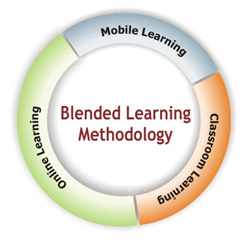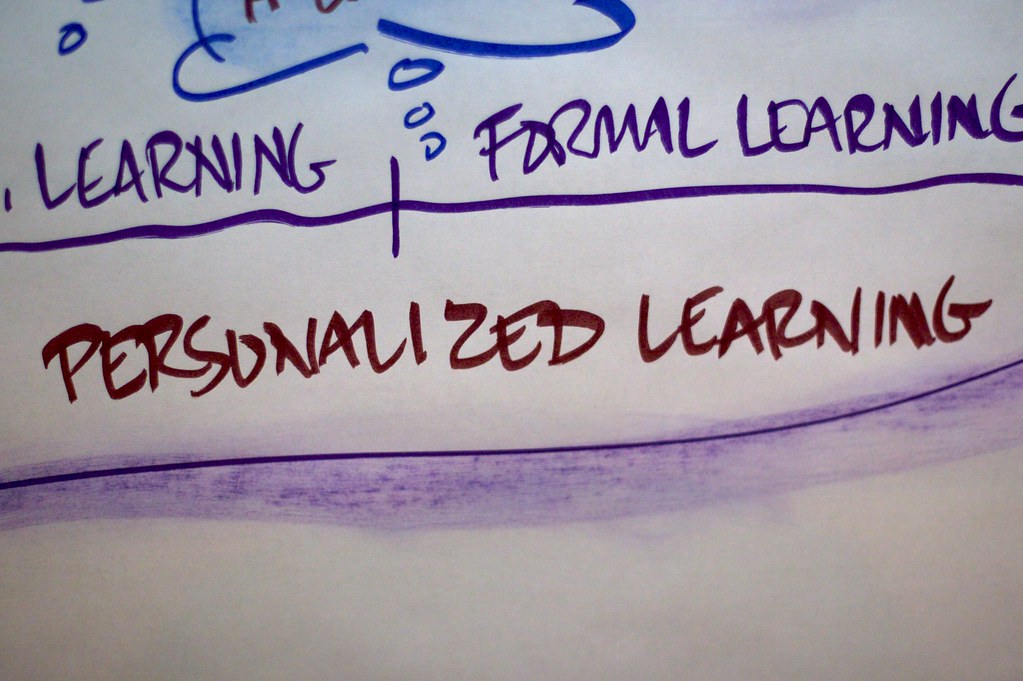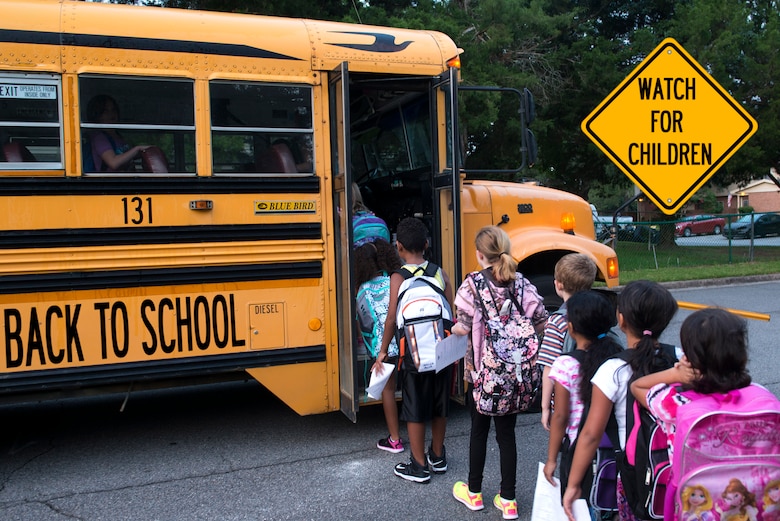I have been in the field of Education Technology for 4 years, and officially in Education for 7 years. For those that have been in this field with me during this time, it may go without saying that the landscape has changed a lot.
This is NOT a ranked list. These are just 7 general observations of some of the big trends I have seen that mainly started or gained popularity during the time I have been in Education.
- 1:1 - A Device for Every Student
- iPads
- Gamification
- Blended & Flipped Learning
- Personalized Learning
- Online Learning & MOOCs
- School as a Service
1:1 Device Initiatives

When I was teaching in 2011, using computers meant reserving a lab (well in advance) and planning the lesson around the technology we would be using. The very next year, I had a classroom set of iPads available all the time. This allowed planning lessons without the need to schedule it well in advance or even plan around the technology. Technology started to fit into the lessons I was teaching. The next year, Chromebooks were available and again my teaching and student learning were transformed. Now that students have a device, that most can take with them anywhere, this again has changed how the education process works.
iPads

For me, this is where education technology started. The idea of Mobile Learning, Using portable computing devices (such as iPads, laptops, tablets, PDAs, and smartphones), wireless networks provide mobility and mobile training, which allows to teach and learn to expand beyond the traditional audience. This concept was just starting to take shape across schools. Schools had technology before, but the technology was very limited. Computers were large and bulky. Laptops were prohibitively expensive for a lot of schools and not as portable as tablets.
iPads, and other tablets, were the first to show how Education Technology should be used in the classroom, as a tool. Technology started to become as common as a pencil and notebook and learning experiences became more personal. With ubiquitous access to the internet, students could learn and collaborate with others in ways seldom seen before.
Gamification
Defined: the application of typical elements of game playing (e.g., point scoring, competition with others, rules of play) to other areas of activity, typically as an online marketing technique to encourage engagement with a product or service.
This is the idea that students should be built up, rather than graded down. Points are earned, not deducted. As with games, students are working toward achieving goals, not just grades. Students are in control of their learning with guidance from their teacher and peers. The biggest benefit of gamification is that students are allowed to fail. Failure is not the end result of their learning however. Failure is given the chance to try again, until mastery is attained.
Blended and Flipped Learning

Blended learning is the approach of using both face-to-face instruction as well as online and mobile learning. As education moves forward, I see the use of blended learning increasing. According to researchers, "...there is some evidence that suggests that in blended instruction, the use of concrete-sequential learning modules, the integration of greater visual imagery, and access to customized time allotment, there will be a positive impact on overall student outcomes."
I highly suggest looking into this model further, see the study below for a start.
Study: The Case for Blended Instruction: Is It a Proven Better Way to Teach?
https://files.eric.ed.gov/fulltext/ED543176.pdf
Personalized Learning

I have heard the following statement from several of my classmates over the years. "I don't remember a single thing that teacher taught me." But when I ask about projects we did for teachers in the past, many remember the projects in which they were an active participant and in which they were able to choose their topic, presentation method, and etc.
The point I am trying to make is, when learning is personalized, students become more invested and engaged. This leads to students creating a more meaningful and personal connection to the content. In turn, this leads to a long lasting learning experience.
What does technology have to do with this? In today's classroom, students become more involved in their learning experiences by using technology. Students can get very personal in a one-on-one environment. Even in whole class instruction, each student can have a say in a discussion by typing their response to a question.
I once attended a conference where a presenter asked a question to the audience, of well over 200 people. Throughout her presentation, she addressed each person's response within an hour. I was taken back by this. For a presenter to make a personal connection in that type of environment seemed impossible before. But with technology, it is impossible no longer.
Alice Keeler - Google Slides Response Template
https://alicekeeler.com/2015/11/02/google-slides-discussion-template/
What is Personalized Learning?
https://www.edweek.org/ew/articles/2014/10/22/09pl-overview.h34.html
Online & MOOCs

Massive Open Online Courses (MOOCs) are free online courses available for anyone to enroll. MOOCs provide an affordable and flexible way to learn new skills, advance your career and deliver quality educational experiences at scale.
- Mooc.org
When I was setting my Master's Degree in Education Technology, this was a brand new topic. MOOCs were a new concept that was causing a lot of debate among us. The main question raised was are these courses going to eventually lead to online only learning, making traditional school institutions obsolete?
I think time has answered that question, as shown in my question to one of my former classmates recently. "Hey, remember MOOCs?" However, I also think this question showed a bit of a misunderstanding many have about education technology. Not everyone learns the same way. So in effect, no one learning solution is going to work for everyone. One major benefit of MOOCs however is that it makes learning more accessible than ever before.
What are MOOCs Good for?
https://www.technologyreview.com/s/533406/what-are-moocs-good-for/
School as a Service

School as a service begins with the commitment of the state to each student as a digital student. When states reduce historical barriers, the transition to personal digital learning will mean a school service: access to quality courses and teachers from several providers.
Education SaaS changes the basic assumptions – it does not need to associate time and place. This does not mean that everything will become virtual – in the foreseeable future, at least 90 percent of families will benefit from local schools, but this requires new thinking, new staffing models, new budgeting strategies and new ways of communicating with students and families.
This trend to me shows some of the latest changes in education. For example, many school districts in my area have started to or have phased out the using of textbooks and standardized curriculum. Now teachers use a variety of resources and tools to use in the classroom. Tools like IXL for practice and mastering skills have replaced doing problems out of a Math book. Teachers collaborate with many others including other teachers, industry professionals, community members, and many more when planning lessons. Learning Management Systems (and Content Management Systems) hold curriculum from a variety of sources, making learning materials available anywhere, not just in the classroom.
For more info
https://irishtechnews.ie/7-crucial-education-technology-trends-for-the-last-5-years/
Comments
Post a Comment